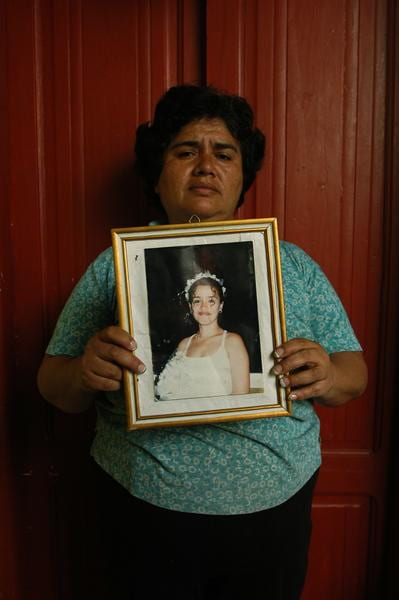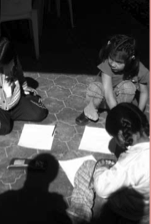Beyond Victims and Aggressors
Thinking about Violence in Poor Families in Brazil and Mexico
Cecilia was still in her teens when she accompanied her husband Roberto to California and had a baby. Like millions of other Mexicans, Cecilia and Roberto lacked immigration papers, but hoped the baby’s U.S. citizenship would be part of a better life. A few years later, Cecilia and the baby were back in Mexico. Roberto’s growing addiction to alcohol and drugs had led to wife-beatings. Yet when Roberto wasn’t under the influence, Cecilia still found her husband attractive. Besides, he had a knack of seeming genuinely repentant when they made love after a fight. Roberto wrote to Cecilia in Mexico saying he missed her and wanted to be a good father to his son. So she went back. Three weeks later she was found strangled in a motel room. The police apparently had better things to do with their time than look for Roberto, and Cecilia’s brothers decided not to throw their lives away by taking the law into their own hands to avenge a sister who had ignored repeated warnings.
Was Cecilia’s failure to get out of this relationship unusual? The evidence from both Brazil and Mexico suggests that while women do end abusive relationships more frequently than they did in the past, it is still common for them not to do so. This opens up important questions about how we should understand domestic and sexual violence. An anecdotal description of a single case too easily reduces the problem to the moral weakness of a male aggressor versus a passive female victim. Yet Cecilia wasn’t passive: she worked hard to try to “change” Roberto and bring out his better side. In doing so she took risks, taunting him for being weak and irresponsible towards his family when he returned to drugs. Although Cecilia never brought a complaint against her husband to any government agency, many of the women who do often withdraw them, preferring to return to high risk efforts to solve the problem themselves. This reflects these women’s acceptance of responsibility to restore order to their conjugal relationships. Sometimes these women even accept a share the blame for the problems, reinforced often by pressures from kin and friends. Although Cecilia’s family did eventually see a break-up as the best option, some of her own kin and friends initially urged her to “deal with it,” in order to prove herself the mature woman she had claimed to be by marrying so young.
Violence is usually seen as negative. Yet many societies see conflict as the “normal” state of affairs in human life and focus on trying to prevent it from getting out of hand. Even the definition of violence as a threat to the maintenance of good social relations varies from society to society. In Mexico and Brazil, some violence within a marriage may be seen as a normal part of building a relationship. Violence can even be seen as strongly positive when used by parents to teach morals to children.
Among the poor, violence often acts as a kind of “language” in the construction of identities. The violence found in youth gangs builds masculine identities through rituals of “challenge and response,” enabling individuals and groups to get others to recognize that they are somebodies rather than nobodies. Women are often drawn into gang culture either as girlfriends of male gang members or through their own group rituals of identity building. Violence is a means by which socially stigmatized people make statements about themselves in a search for respect and is not restricted to gangs. Fights between neighbors in slums often express the efforts of some groups to assert claims to social respectability while blaming others for their community’s “criminal” image, such as those who arrived as a result of more recent land invasions.
Understanding the meanings of violence in particular social settings helps us understand how some manifestations of violence can come to be considered “natural” qualities of people and their relationships, while others come to be considered “abnormal.” In the mestizo rural community where Cecilia and Roberto were born, a marriage is not simply a relationship between two individuals. It is also about social ties with kin and neighbors, and about respectability and honor. Quite often, when women talk among themselves, they express the inevitability of a certain degree of suffering at the hands of men whose weaknesses, such as lack of ability to control their sexual urges, are seen as natural attributes of their sex. Yet Roberto was a poor masculine role model in his town, because his addictions made him an inadequate home provider. His weaknesses were seen as different from those of “normal” men by the community.
Many other migrant men who were excellent providers expected their wives to respect their patriarchal authority. Caring but domineering, they obliged their wives to be subtle in their tactics if they wanted to get their husbands to give them some leeway to have lives beyond the home and the children. Like many of the women that Matthew Gutmann describes in his book on a working class district of Mexico City, The Meanings of Macho, women want to be married to men who are strongly masculine rather than hen-pecked (mandilones). Yet, most women are active in “negotiating” their relationships with their husbands, without provoking chronic abuse.
The macho model of masculinity is often invoked to “explain” domestic violence in Latin America. Yet the idea of machois not wholly negative when put into historical perspective. It can refer to a man who stands up for his rights, protects his family and defends poor people against abusive landlords. As Gutmann describes about the word’s etymology in Mexico, the term became associated with new icons of national identity, such as the cowboy singer and screen idol, Jorge Negrete. Brazil’s popular national icons are more ambiguous: most live outside the rules of normal society but embody qualities Brazilian society admires in men. The rogue (malandro), is much celebrated in samba lyrics, and the bandit from the interior (cangaceiro) is a popular film subject. The most famous cangaceiro is Lampião, whose partner Maria Bonita, leaves her original husband to join his robber band. Folk models transmit more complex messages about the role of women than the stereotype of female domination by the aggressive male machista. Nevertheless, the idea that patriarchal ideologies are a social problem has taken root in popular consciousness today to such an extent that some Mexican men find it necessary to deny that they are “machistas” because the term has become associated with excessive violence as well as a double standard of marital fidelity. Women received the dubious compensation of being cast in the Marian role, spiritually superior, but best confined to the home.
Yet even where strongly patriarchal values seemed to prevail, women’s responses could alleviate their effects to some extent. In the indigenous community of Tlayacapan, described by John Ingham in his book Mary, Michael and Lucifer, women became psychologically ill due to the contradiction of living in a society that demanded they behave like the Virgin while their men folk both demanded their marital rights and had sex outside of marriage. Afflicted by attacks of “nerves” that were diagnosed as possession by malignant spirits, the women were cured by a sensual massage administered by male healers. This ritual solution to the contradictions of these women’s lives made it even less likely that their husbands would change their behavior. However, at least the wives did get a chance to fulfill some of the erotic desires that the local model of male domination, backed by the Catholic Church, sought to repress.
In both Mexico and Brazil, the social situation of poor citizens is shaped not only by extreme economic inequalities between classes, but by legacies of a colonial rule that connects class with ideas about race. European dominance was expressed through sexual access to indigenous or black women and some kind of “feminization” of indigenous and black men. A male sense of humiliation may also affect the domestic relations of poor families today, but only as yet another aspect of a more complicated story, as we will now demonstrate with further evidence from Brazil.
As a result of the way class and race relate, people living in Brazilian slums are “blackened” by their poverty in the eyes of outsiders, regardless of their actual physical appearances. We might expect some men who feel humiliated by double stigmatization and routinely suffer violence at the hands of the police , to seek solace in playing hyper-masculine roles in the family domain, the one place where it seems possible to dominate others. Though it is not only poor men who act as violentmachos in Brazil, the problems of poor men are aggravated by their growing inability to find steady jobs. Enforcing male desire to dominate is the fact that women now have better prospects of finding work in the retailing and service sectors. In contrast to working-class women, male livelihoods and status are precarious, and fights between partners frequent. The long-term stability of the family itself is often built more on the relationships between mothers and children than those between husbands and wives, and women themselves sometimes use physical violence in the negotiation of conjugal relationships.
If one defines violence as negative, as governments and NGOs do, one of the greatest preoccupations becomes violence towards children. The tendency is to conflate issues of sexual abuse, physical punishment and child labor, subjects about which poor people themselves have radically different ideas.
According to United Nations statistics, more than 100,000 children and adolescents may be subject to sexual abuse in Brazil. Data from the Brazilian Association for the Protection of Infancy and Adolescence suggest that girls are sexually abused far more than boys, and that the abusers are generally family members or neighbors known to the child, including stepfathers and fathers who strive to keep their daughters for themselves.
Research conducted by Maria Gabriela Hita and Miriam Rabelo on members of religious groups in poor neighborhoods of Salvador, Bahia, reveals some of the ambiguities surrounding attitudes to rape and sex with children. Evangelicals saw sexual relations with children as a sickness that could have a diabolic origin. For followers of Candomblé, such abusers were born with a “weak head,” the head being the center of intelligence and personal equilibrium. In both cases, ritual intervention might help the abuser to avoid repeating the crime, but these explanations also reduce the individual man’s level of culpability. The idea that male desire comes from “natural” animal passions, coupled with the idea that a man should initiate sexual action, or insist on sex as necessary to prove himself and assert supremacy, excuses the man’s actions and explains his uncontrollable sexual need.
Rape is often rationalized by explaining that men violate other women because their wives fail to satisfy them. There is even an idea of male rights to use women who have already been “used” by other men by gang raping them. A line is normally drawn that makes sex between men and female relatives “abnormal” because it is incestuous. Yet given the idea that men should initiate sex, men have difficulties believing that a “no” will not turn into a “yes.” When incest or sexual relations with minors do occur, the mothers frequently share in the blame for failing to protect their daughters from the natural tendency of male sex drives to transgress the boundaries of social rules. Even an abused child may be seen as partly responsible, for displaying precocious signs of interest in sex.
Parents are concerned about the impact of drug trafficking and the media’s promotion of sexuality to their children. This concern strengthens the belief that good parenting should involve physical punishment, since nothing seems effective in countering daily temptations of drugs and sex. The idea that beating is successful, leads parents to reject the demands of social workers that they should encourage children to report abuse. Older women in particular worry that teaching young children about sex will only accelerate an increasingly precocious interest, arguing that children need to be kept out of harm’s way, off the street and away from more salacious television programs. They believe that children form better characters if given the chance to dedicate themselves to an honest trade from the earliest possible age.
These working class ideas run counter to the principle that childhood should have the same meaning for rich and poor, challenging middle-class efforts to end child labor and physical punishment of children. Violence is seen in a different context, one that must be understood and worked with. In advancing these values, poor parents offer a class critique of the hypocrisy of those responsible for the economic and social changes that make it ever more difficult for them to educate their children to survive. If children are to be protected from rape, work exploitation and beatings, and if spouses are to leave abuse behind, the structural violence in the poor communities of Latin America must be understood on the poor’s own terms.
Maria Gabriela Hita is a professor in the department of sociology of the Federal University of Bahia, where she also participates in the programs for the Interdisciplinary Study of Women and Social Sciences, Environment and Health, and a consultant for the Brazilian Center for Analysis and Planning, CEBRAP.
John Gledhill is Max Gluckman Professor of Social Anthropology and co-director of the Center for Latin American Cultural Studies at the University of Manchester, England.
Related Articles
Salvadoran Youth, Transnationalism’s Other Product
English + Español
A completely distraught junior high school teacher in the Washington DC area approached her assistant principal—a highly-educated white middle-class man—one morning for urgent…
Cuba on the Edge: Short Stories from the Island
If you want to read contemporary Cuban fiction and do not have access to the Spanish original, an increasing number of excellent translations will now allow you to become acquainted with…
Making A Difference: Literacy in Calca
Seated on the floor of their school house twenty attentive first grade eyes watch as Martha turns the pages and asks aloud about the fate of David a friendly llama…





